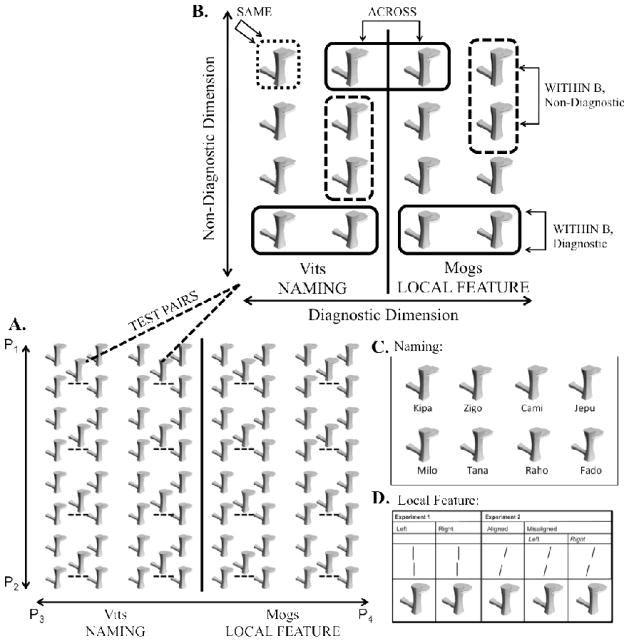Figure 1.
A. Morphspace of novel objects, Ziggerin-morphs, created from four parent Ziggerins (P1–P4, see Figure 2) along two morph lines. The morphspace can be divided into two categories, creating a diagnostic feature dimension and non-diagnostic dimension; category boundary and category-task assignment were counterbalanced between subjects. Ziggerin-morphs not underlined with a dotted line (8×8 set) were used for the training tasks. Ziggerin-morphs underlined with a dotted line (4×4 set) within the training set were used in the discrimination test. B. Ziggerin-morphs used for the discrimination task. Same and different pairs were used. Different pairs were within and across the category boundary and in both the diagnostic and non-diagnostic direction. C. Examples of the eight Ziggerin-morphs from the Vit category that were learned as individuals with unique names. D. The Vernier lines used as the local feature judgment task for the Mog category. In Experiment 1, lines were judged as top line left or right, and in Experiments 2 lines were judged as aligned or misaligned (regardless of whether misaligned left or right).

